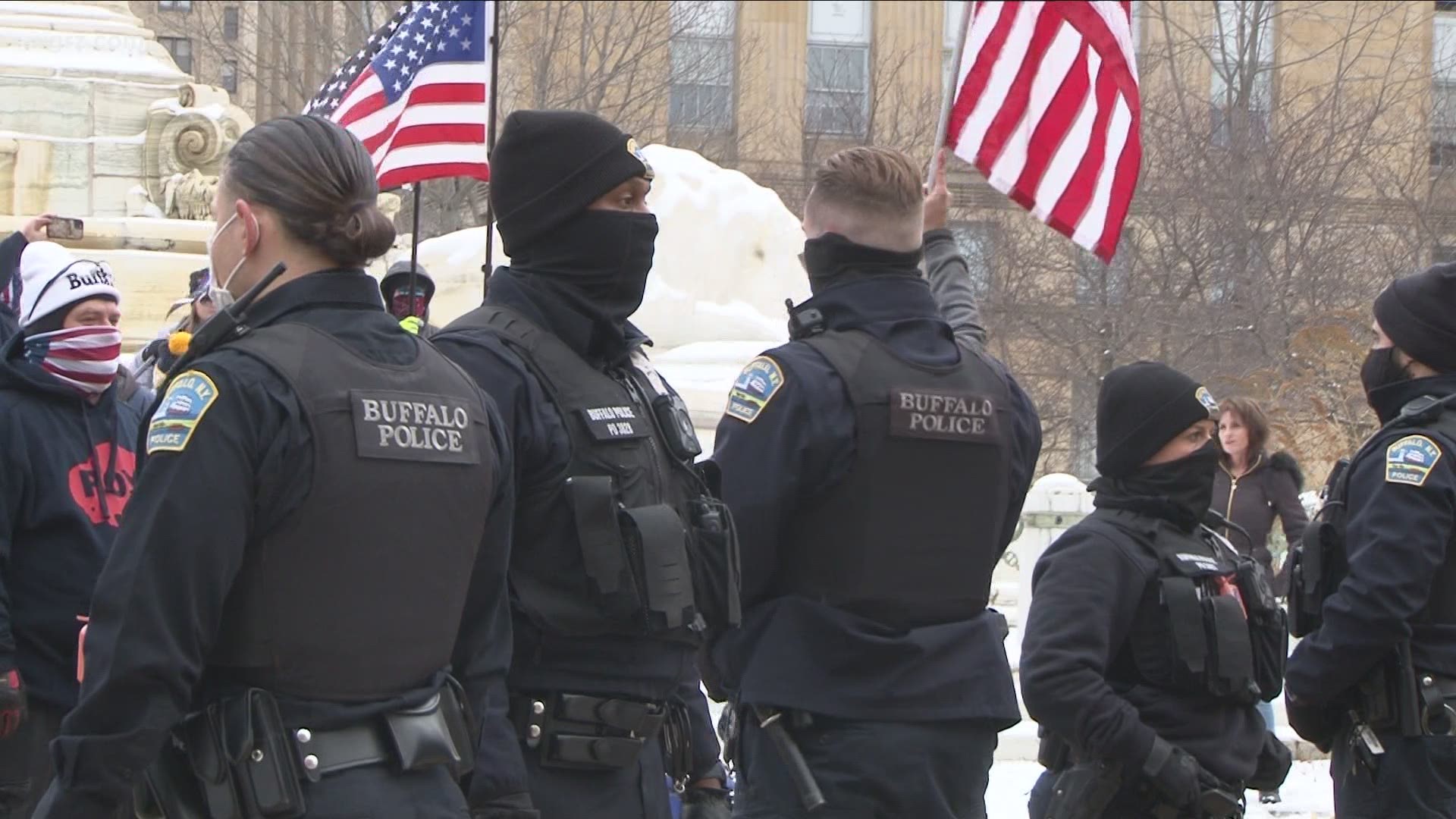Buffalo Police say it's a difficult challenge to handle some recent protests, including two that happened this past weekend.
2 On Your Side found out it's also an increasing financial burden for a city already feeling a major impact from the pandemic.
This past Saturday two groups of protestors, one upset with COVID restrictions, the other calling attention to COVID deaths, meeting head on in Niagara Square.
There was some scuffling as seen on social media and tweets by the WNY Media website. Buffalo Police officers were caught right in the middle trying to keep the peace.
Captain Jeff Rinaldo told us "we respect people's rights to peacefully protest, to demonstrate, to have their voices heard."
"But if people are attending what should be a peaceful protest, then I don't understand why they feel a need to arm themselves while holding these protests. And what you're seeing now is where both sides of an issue are gathering in the same space. Both sides have members that are armed and the chances for a confrontation getting violent are pretty high."
One person in pictures from the event had a large knife in a holster strapped to his chest. Others were wearing motorcycles helmets and someone tossed a canister with some sort of chemical irritant.
Rinaldo stresses police did not use any such substance.
Rinaldo says the knife can be displayed but if used to threaten someone, there could be charges. He also notes that some people have carried ax handles in demonstrations.
One participant on Saturday openly admitted he had a concealed carry handgun but did not pull it out. At this point there is no further investigation to determine if there should be charges.
Police say there were no arrests this time in part because no one really wanted to file a complaint. Despite some protesters ending up on the ground and even bleeding from cuts, Rinaldo says some protestors turned down offers of first aid.
In fact, they don't like speaking with police or, as we have found out, they sometimes don't like speaking with the media either. Usually a police lieutenant or other supervisor will try to seek out an apparent leader of the event to determine their intentions or try to defuse any perceived threats.
Rinaldo says officers show great restraint and patience, but that direct approach doesn't always work.
Rinaldo says that "they don't want to provide us with any information. Most times, nobody wants to take credit for being the organizer because they're afraid that if something bad does happen that they have some liability in that. So it really is difficult."
For example, Rinaldo says, "what even is the intention of the protest? Is it going to be something that stays still, stays within Niagara Square, or is it something that they intend to march? As we saw on Saturday - their intention unbeknownst to us, was to block off Niagara Square and place empty body bags in the middle of the street."
Social media postings and tips from people who don't want to see anyone get hurt can help police somewhat prepare for a protest or other incidents with a measured response. But police say it also costs a lot of money for a city battered by the pandemic.
Rinaldo explains "The city runs what's called a minimum number of manpower cars in each district. Well we don't have 50 officers sitting around with nothing to do. So a lot of times these protests and demonstrations are being policed on overtime."
BPD estimates close to one million dollars will have been spent this year on just police response to protests.
However, Captain Rinaldo again is concerned more about protestors with potential weapons.
"It doesn't have to be a gun. It can be anything, any type of weapon or anything that can be used as a weapon. You're putting yourself really in a bad position, because if somebody interprets your actions or your confrontation with them with the us or threatened use of that weapon - you could be facing very serious criminal charges," Rinaldo warned.

